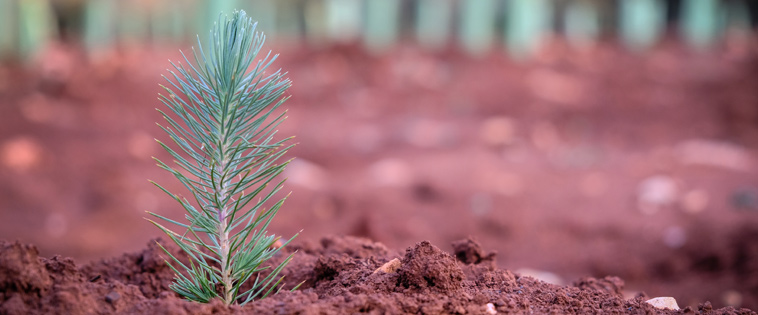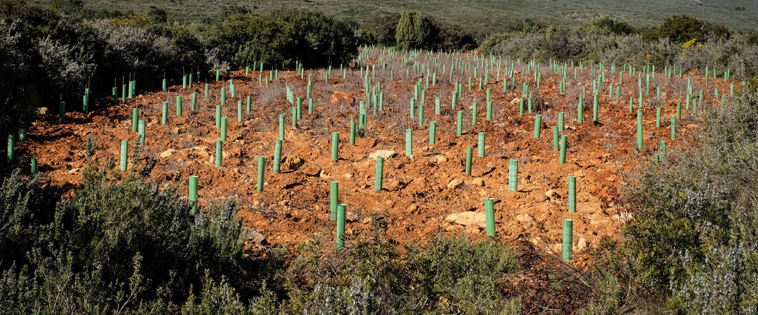As part of its “Tigernuts for Life” program and as part of its commitment to sustainability, Tigernuts is launching new initiatives in 2021. At the beginning of the year, the company completed the first planting of 2,200 trees, the first step in an ambitious carbon footprint offset project. Certified by the specialized agency Bosques Sostenibles (Sustainable Forests) and registered with the Ministry of Ecological Transition, this work will make it possible to absorb of hundreds of tons of CO2 in the coming years, leading the company towards its goal of being carbon neutral by 2025. Tomorrow’s world is gearing up today and Tigernuts aspires to be part of the change.
Carbon footprint offset and reduction: Tigernuts’ double commitment
Although Tigernuts’ carbon footprint in 2020 has decreased by 20% compared to fiscal year 2019, the company has committed to redoubling its efforts for 2021. On the one hand, Tigernuts continues to limit the CO2 emissions associated with its activity through various projects, such as focusing on the energy efficiency of its structures, the use of ‘green’ fuel to import some of its merchandise or greater control over waste treatment, among other aspects. On the other, it will offset its emissions to achieve the ambitious goal of being carbon neutral in 2025. Although this is a current priority for the company, it is only one step along the way. The company’s planting of trees under the Sustainable Forests initiative is part of a global vision: always making long-term progress. A question of courage and responsibility.
Consistent and respectful planting
The place chosen for reforestation is in the municipality of Dos Aguas, in a mountainous area covered with Mediterranean vegetation. For Tigernuts, a company founded and based in the Valencian Community, this project represents an unprecedented opportunity to act on its direct and local environment. Therefore, the two hectares of land required for the project were identified with this in mind, as well as the importance of planting a native species whose growth will benefit the local flora as a whole. The white pine (Pinus Halepensis) respects the natural characteristics of the biotope and promises a consequent absorption of CO2 with an annual yield of more than 350 tons of CO2 consumed at the end of the 40-year period. 2,200 plants have been planted by hand and then equipped with stakes and protections to ensure their healthy development. The evolution of the planting will be subject to precise controls and evaluations by Tigernuts and Sustainable Forests, which are already studying the possibility of similar plantings in the future.



what is the African country of origin? How do Africans use tigernuts?
Our Tiger Nuts come from Niger. Their population use the Tiger Nuts for direct consumption as a snack, for milling into flour and to extract a vegetable beverage out of it.